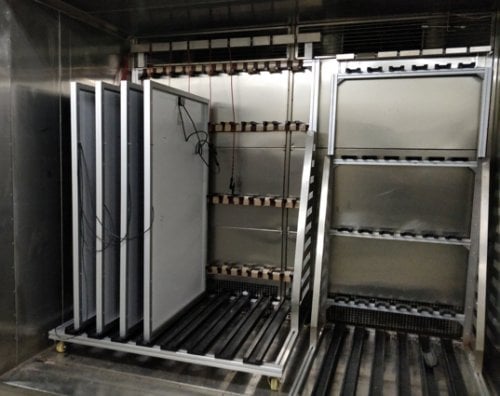Potential Induced Degradation (PID) Testing for Solar Modules
Perform Potential Induced Degradation (PID) Testing on solar modules at our Accredited PV Laboratory.
What is Potential Induced Degradation (PID) Test ?
PID test is done as a quality assurance test for manufactured modules to expect how they will perform over a long time in different conditions. For PID testing of solar modules, the module is subjected to a temperature of 60 °C with around 85% humidity and under 1000v load for a period of 96 hours. This is why the test is known as PID (96h). It simulates the voltage and temperature conditions the module will be exposed to and calculate how it will affect power losses.
How is Potential Induced Degradation (PID) Test (96h) performed?
For the test, a setup of module-like layer stack of solar cells, polymer foil and glass is placed between two metal electrodes. Then high positive voltage is applied at upper electrode (voltage equivalent to PID) in the module while heating the bottom (ground) electrode.
For the results, the shunt resistance value is acquired as a function of time. Since module conductance is proportional to current losses through shunts, expected power loss ΔP can be calculated.
PID Test (96h) and IEC 62804-1
IEC 62804-1 is the PID testing standard used.
For replicating the conditions leading to PID, the below conditions are used:
- Voltage 1000 V
- Temperature: 85 °C
- Test duration: 96 hours
- Maintaining dry conditions, with no use of water


